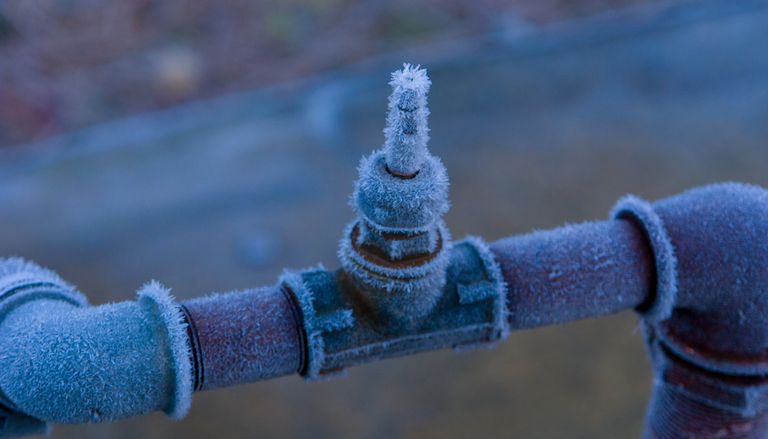How to Prevent Frozen Pipes in Cold Weather: Pro Guidance
How to Prevent Frozen Pipes in Cold Weather: Pro Guidance
Blog Article
The content below involving Preventing and dealing with frozen pipes is definitely remarkable. You should take a look.

Winter can ruin your plumbing, particularly by freezing pipelines. Here's how to prevent it from happening and what to do if it does.
Intro
As temperatures decline, the danger of icy pipes increases, potentially leading to pricey repair work and water damages. Recognizing how to avoid frozen pipes is crucial for property owners in chilly climates.
Avoidance Tips
Shielding vulnerable pipelines
Cover pipelines in insulation sleeves or make use of warm tape to secure them from freezing temperatures. Focus on pipes in unheated or external locations of the home.
Home heating techniques
Keep indoor areas effectively heated up, especially locations with pipes. Open up cupboard doors to permit cozy air to flow around pipelines under sinks.
Just how to determine icy pipelines
Seek decreased water flow from taps, unusual odors or noises from pipelines, and noticeable frost on exposed pipelines.
Long-Term Solutions
Architectural adjustments
Take into consideration rerouting pipes far from exterior wall surfaces or unheated locations. Add extra insulation to attic rooms, cellars, and crawl spaces.
Updating insulation
Invest in high-quality insulation for pipes, attic rooms, and walls. Proper insulation assists preserve regular temperatures and reduces the risk of frozen pipes.
Shielding Exterior Plumbing
Yard tubes and outdoor faucets
Detach and drain pipes yard tubes prior to wintertime. Mount frost-proof spigots or cover outdoor taps with protected caps.
Recognizing Icy Pipelines
What causes pipelines to freeze?
Pipelines ice up when exposed to temperature levels listed below 32 ° F (0 ° C) for prolonged periods. As water inside the pipes freezes, it expands, putting pressure on the pipe wall surfaces and possibly creating them to rupture.
Risks and damages
Icy pipes can bring about water supply interruptions, building damages, and expensive repairs. Burst pipes can flooding homes and create extensive structural damages.
Indications of Frozen Pipeline
Identifying frozen pipelines early can avoid them from breaking.
What to Do If Your Pipelines Freeze
Immediate activities to take
If you think icy pipes, maintain taps open to eliminate stress as the ice melts. Utilize a hairdryer or towels taken in hot water to thaw pipes slowly.
Verdict
Preventing icy pipelines calls for aggressive actions and fast actions. By recognizing the causes, signs, and preventive measures, homeowners can protect their pipes throughout cold weather.
5 Ways to Prevent Frozen Pipes
Drain Outdoor Faucets and Disconnect Hoses
First, close the shut-off valve that controls the flow of water in the pipe to your outdoor faucet. Then, head outside to disconnect and drain your hose and open the outdoor faucet to allow the water to completely drain out of the line. Turn off the faucet when done. Finally, head back to the shut-off valve and drain the remaining water inside the pipe into a bucket or container. Additionally, if you have a home irrigation system, you should consider hiring an expert to clear the system of water each year.
Insulate Pipes
One of the best and most cost-effective methods for preventing frozen water pipes is to wrap your pipes with insulation. This is especially important for areas in your home that aren’t exposed to heat, such as an attic. We suggest using foam sleeves, which can typically be found at your local hardware store.
Keep Heat Running at 65
Your pipes are located inside your walls, and the temperature there is much colder than the rest of the house. To prevent your pipes from freezing, The Insurance Information Institute suggests that you keep your home heated to at least 65 degrees, even when traveling. You may want to invest in smart devices that can keep an eye on the temperature in your home while you’re away.
Leave Water Dripping
Moving water — even a small trickle — can prevent ice from forming inside your pipes. When freezing temps are imminent, start a drip of water from all faucets that serve exposed pipes. Leaving a few faucets running will also help relieve pressure inside the pipes and help prevent a rupture if the water inside freezes.
Open Cupboard Doors
Warm your kitchen and bathroom pipes by opening cupboards and vanities. You should also leave your interior doors ajar to help warm air circulate evenly throughout your home.

Do you like reading about Prevent Frozen Pipes ? Make feedback directly below. We'd be pleased to find out your insights about this blog posting. We are looking forward that you visit us again in the future. Sharing is good. You just don't know, you could be doing someone a favor. Thanks for your time. Return soon.
Call Today Report this page